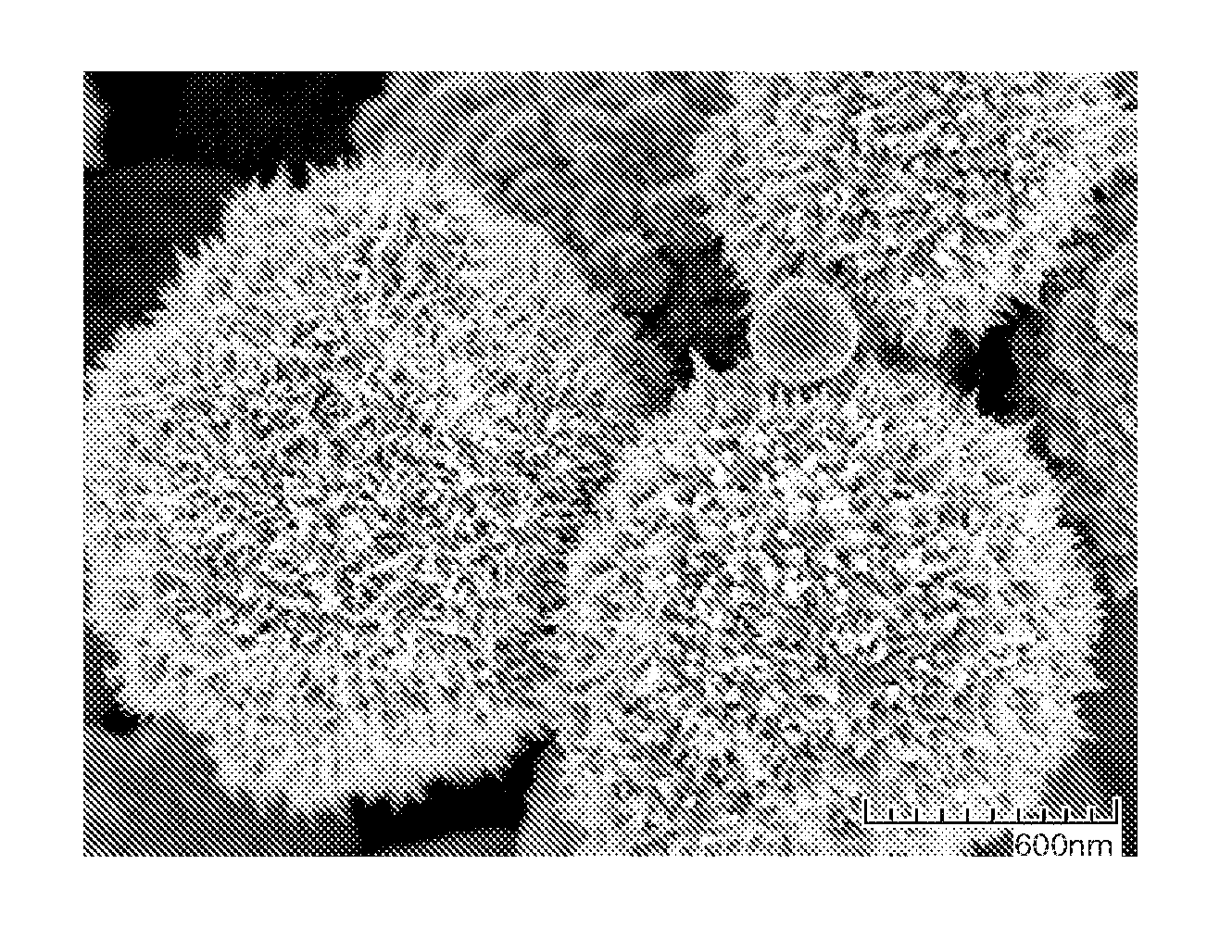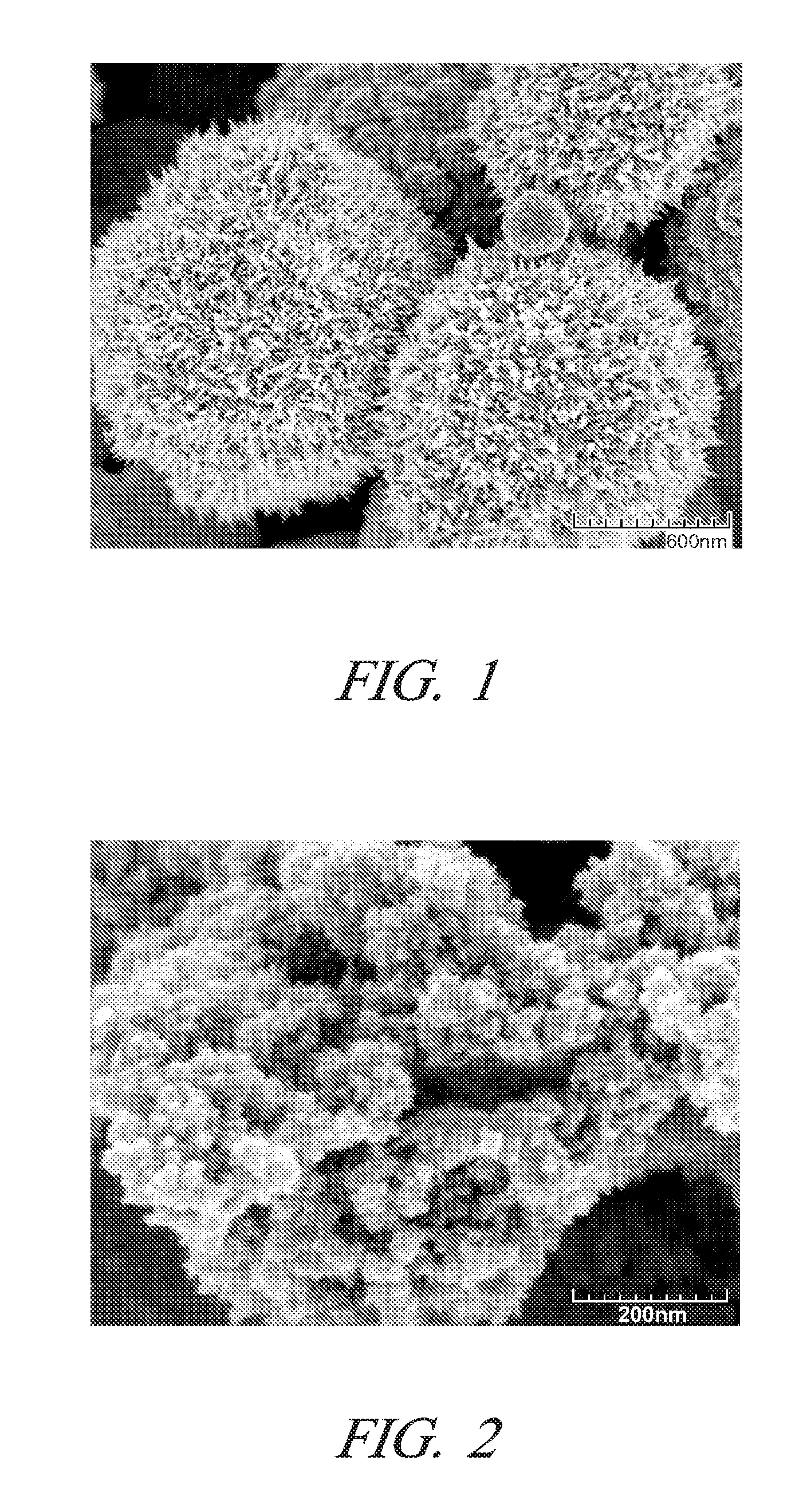Platinum particles with varying morphology
a technology of platinum particles and morphologies, applied in the field of small platinum particles, can solve the problems of larger (micron-size) platinum particles, and achieve the effect of reducing the liquid's vapor pressure and minimizing the loss of volatile reactants
- Summary
- Abstract
- Description
- Claims
- Application Information
AI Technical Summary
Benefits of technology
Problems solved by technology
Method used
Image
Examples
example 1
[0015] A 20 mM aqueous solution of chloroplatinic acid, H2PtCl6, was prepared. 24 mL of solution, together with 1 mL butanol, was placed in a jacketed sonication cell in which the atmosphere could be controlled. The temperature of the solution was heated to 60° C. and maintained at that temperature by the circulation of heated water through the jacket of the cell. Anaerobic conditions were maintained inside the reaction vessel. An atmosphere of argon gas was maintained over the surface of the solution and hydrogen was slowly bubbled through the solution during the reduction reaction. The average pressure inside the reaction vessel was close to atmospheric pressure throughout the reduction reaction.
[0016] The solution was exposed to 750 W of vibrational energy at 20 kHz (ultrasound) for a total insonation period of one hour, with a duty cycle of 0.1 second “on” and 0.4 second “off.” A precipitate formed in the water. The aqueous liquid was centrifuged and the solid was collected and...
example 2
[0019] A second experiment was conducted under milder and lower power conditions.
[0020] A 0.8 mM aqueous solution of chloroplatinic acid, H2PtCl6, was prepared. 24 mL of solution, together with 1 mL butanol, were placed in a jacketed sonication cell in which the atmosphere could be controlled. The temperature of the solution was lowered to 4° C. and maintained at that temperature by the circulation of a refrigerated bath through the jacket of the cell. Anaerobic conditions were maintained inside the reaction vessel. An atmosphere of argon gas was maintained over the surface of the solution and hydrogen was slowly bubbled through the solution during the reduction reaction. The average pressure inside the reaction vessel was close to atmospheric pressure throughout the reduction reaction.
[0021] The solution was exposed to 225 W of vibrational energy at 20 kHz (ultrasound) for a total insonation time of one hour with a duty cycle of 0.1 second “on” and 0.4 second “off.” A precipitate...
PUM
| Property | Measurement | Unit |
|---|---|---|
| Temperature | aaaaa | aaaaa |
| Concentration | aaaaa | aaaaa |
| Morphology | aaaaa | aaaaa |
Abstract
Description
Claims
Application Information
 Login to view more
Login to view more - R&D Engineer
- R&D Manager
- IP Professional
- Industry Leading Data Capabilities
- Powerful AI technology
- Patent DNA Extraction
Browse by: Latest US Patents, China's latest patents, Technical Efficacy Thesaurus, Application Domain, Technology Topic.
© 2024 PatSnap. All rights reserved.Legal|Privacy policy|Modern Slavery Act Transparency Statement|Sitemap


